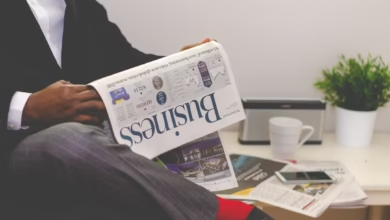Inflation Unveiled: Understanding Its Impact on Purchasing Power, Investments, and Economic Stability

Inflation is a persistent economic phenomenon that affects every facet of our daily lives, from the groceries we buy to the investments we make. As prices rise, consumers often find their purchasing power eroded, forcing them to reevaluate their spending habits and financial strategies. In this article, we will delve into the multifaceted impacts of inflation, exploring how it intertwines with interest rates and influences various asset classes. We will also examine effective strategies for protecting investment portfolios in an inflationary environment, drawing on historical examples of hyperinflation to glean valuable lessons for today’s economy. Furthermore, we will investigate the role of central banks in combating inflation through monetary policy and consider how supply chain disruptions contribute to rising prices. Finally, we will analyze the implications of inflation on wages and employment, providing a comprehensive overview of this critical economic issue. Join us as we navigate the complexities of inflation and its far-reaching effects on consumers and investors alike.
- 1. **Understanding Inflation: How It Erodes Consumer Purchasing Power**
- 2. **Navigating the Economic Landscape: Inflation, Interest Rates, and Investment Strategies**
- 3. **Lessons from the Past: Historical Hyperinflation and Its Implications for Today**
1. **Understanding Inflation: How It Erodes Consumer Purchasing Power**
Inflation is a sustained increase in the general price level of goods and services in an economy over time. As prices rise, the purchasing power of money declines, meaning that consumers can buy fewer goods and services with the same amount of money. This erosion of purchasing power can significantly impact household budgets and overall economic well-being.
For example, consider a scenario where inflation rises at a rate of 3% per year. If a consumer's salary remains unchanged, their real income effectively decreases, limiting their ability to afford everyday essentials, such as food, housing, and transportation. This situation often leads individuals to alter their spending habits, making trade-offs between necessary and discretionary purchases.
Inflation disproportionately affects low- and middle-income households, as these groups tend to spend a larger portion of their income on basic necessities, which often experience the highest price increases. As a result, inflation can exacerbate economic inequality, as wealthier individuals may have more resources to absorb rising costs or invest in assets that appreciate in value.
Moreover, inflation can create uncertainty in the economy, leading consumers to delay purchases in anticipation of future price increases. This behavior can further impact economic growth, as reduced consumer spending can slow down business revenue and investment. Consequently, understanding the dynamics of inflation is crucial for consumers, as it directly influences their financial decisions and overall quality of life.
2. **Navigating the Economic Landscape: Inflation, Interest Rates, and Investment Strategies**
Navigating the economic landscape requires a nuanced understanding of how inflation and interest rates interact and the implications for investment strategies. Inflation, the rate at which the general level of prices for goods and services rises, erodes purchasing power, prompting central banks to adjust interest rates as a countermeasure. When inflation rises, central banks often increase interest rates to cool the economy and stabilize prices. Higher interest rates make borrowing more expensive, which can slow consumer spending and business investment, ultimately affecting economic growth.
For investors, this environment presents both challenges and opportunities. As interest rates rise, fixed-income investments, such as bonds, may offer lower returns, particularly if inflation outpaces their yields. Conversely, equities tend to perform well in inflationary environments when companies can pass on higher costs to consumers. However, sectors such as utilities and consumer staples may struggle due to their lower pricing power.
To protect their portfolios from inflation, investors can consider diversifying into assets traditionally viewed as inflation hedges. Real estate, commodities, and inflation-protected securities (such as TIPS) can help preserve purchasing power. Additionally, equities in sectors like energy, healthcare, and materials may provide more resilience against inflationary pressures due to their ability to maintain profit margins.
Ultimately, navigating inflation and interest rates requires a proactive approach to investment strategy. Investors should remain informed about economic indicators and central bank policies, adjusting their portfolios as necessary to mitigate risks associated with inflation while capitalizing on potential growth opportunities. By strategically positioning themselves, investors can better weather the complexities of the economic landscape.
3. **Lessons from the Past: Historical Hyperinflation and Its Implications for Today**
Historical instances of hyperinflation provide valuable lessons for understanding the complexities and consequences of inflation in modern economies. One of the most notorious examples is the hyperinflation experienced in Germany during the Weimar Republic in the early 1920s. Following World War I, the German government printed massive amounts of money to pay reparations and support its economy, leading to astronomical price increases. At its peak, prices doubled approximately every few days, rendering the currency nearly worthless and causing widespread economic and social turmoil. This episode illustrates the critical importance of maintaining monetary discipline and the dangers of excessive money supply growth.
Another significant case is Zimbabwe in the late 2000s, where hyperinflation reached an incredible rate of 89.7 sextillion percent per month. Similar to Germany, Zimbabwe's government resorted to printing money to finance deficits, ultimately leading to the collapse of its currency. The consequences were severe: savings were wiped out, businesses failed, and the population faced extreme poverty and food shortages. This situation underscores the importance of sound fiscal policies and the need for trust in a nation’s currency.
These historical examples highlight that hyperinflation often stems from a loss of confidence in a currency, which can be triggered by political instability, poor economic management, or external shocks. For contemporary policymakers, the lessons are clear: maintaining the balance between money supply and economic growth is essential. Furthermore, fostering transparency and accountability in monetary policy can help build public trust in financial systems.
As we navigate the complexities of inflation today, these historical lessons remind us that swift and drastic measures to address economic challenges can lead to unintended consequences. Understanding the past equips us to recognize warning signs and implement effective strategies to prevent similar situations from occurring in the future.
In conclusion, inflation is a multifaceted economic phenomenon that profoundly impacts consumer purchasing power, interest rates, and investment strategies. As we have explored, rising prices can erode the value of money, affecting individuals' ability to purchase goods and services while simultaneously influencing central banks' monetary policies and interest rate adjustments. Understanding the historical context of hyperinflation offers critical lessons for managing today's economic challenges, reminding us of the importance of proactive measures in safeguarding financial stability.
Investors can employ various strategies to protect their portfolios from inflation's adverse effects, including diversifying asset classes and considering inflation-linked securities. Moreover, recognizing the role of supply chain disruptions in driving inflation highlights the necessity for adaptive approaches to investment and spending. Lastly, it is essential to acknowledge the broader implications of inflation on wages and employment, as these factors not only influence individual livelihoods but also shape the overall economic landscape.
As we navigate this complex economic environment, staying informed and agile will be crucial for consumers and investors alike. By understanding the dynamics of inflation and its repercussions, we can better prepare ourselves for the challenges and opportunities that lie ahead.






